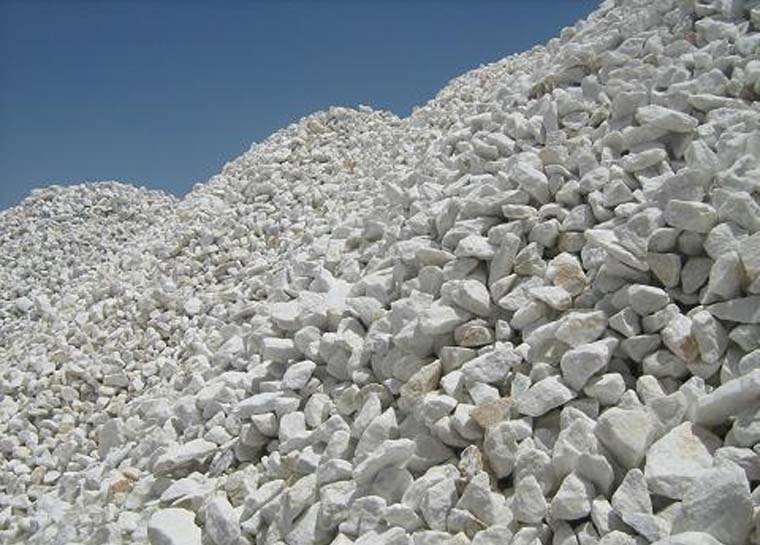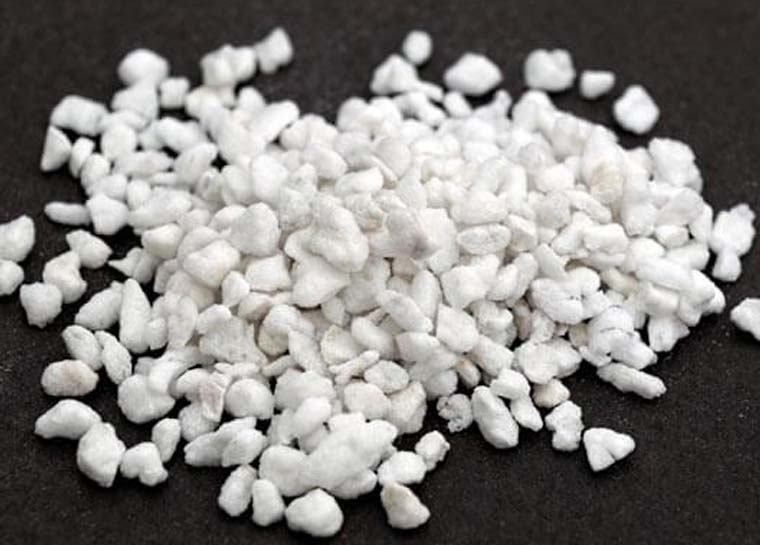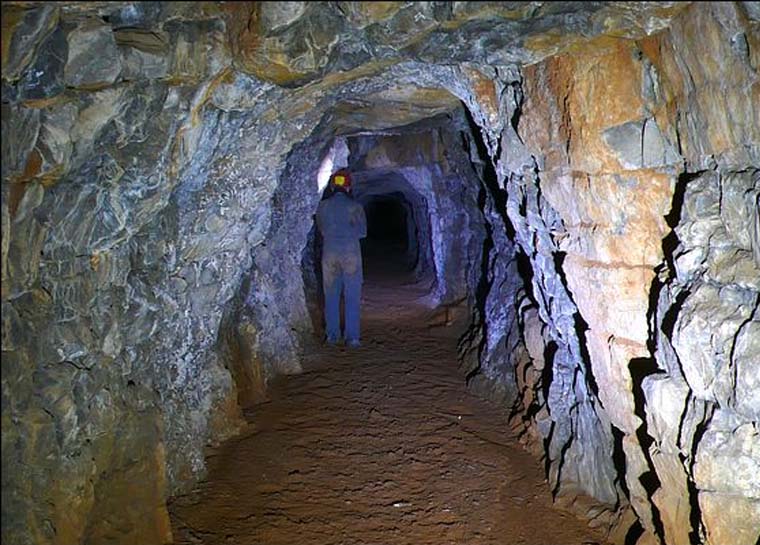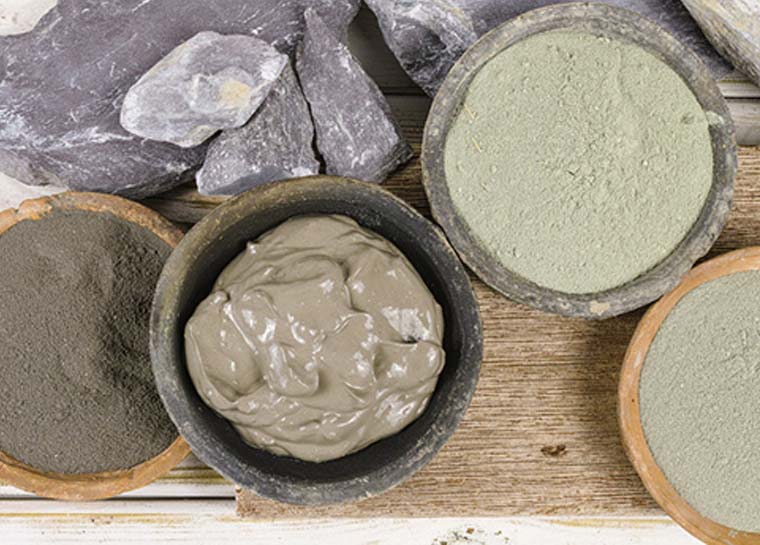Mica is a general term for a group of alumina-silicate minerals. These minerals have a sheet-shaped structure and are composed of various physical and chemical compounds. Mica minerals are plate silicates that include muscovite, biotite, phlogopite, lipidolite and natronite.Muscovite is the most important and abundant plate mineral. Sheet muscovite is found in pegmatites and flakes in granite, pegmatites and schists. Lipedolite is formed in lithium-rich pegmatites. Phlogopite has been reported as streaks and masses in pyroxenites and magnesium-containing skarns.
Minerals of economic importance of Mica Group are classified as follows:
- Muscovite: Potassium Mica (green or ruby) 3(H2KAl3(SiO4))
- Biotite: Magnesium Iron Mica (dark color) (Mg, Fe)3Al(SiO4)3)(H2K)
- Phlogopite: Magnesium Mica (yellow, dark brown) H2K(Mg)3Al(SiO4)3
- Vermiculite: Juicy Biotite (bright yellow)
- Lipidolite: Lithium Mica (pale yellow) (KLiAl(OH,F)2Al(SiO4)3
The crystal system of these minerals is mono-clinic. This group of minerals contains various compounds of aluminum silicate, iron, magnesium and mica. The presence of fluorine, barium, manganese, vanadium have also been reported in these minerals. Among these minerals, muscovite is widely used in industry due to its exceptional physical, chemical, thermal and mechanical properties. Vermiculite and phlogopite are just as important as mica. Biotite is rarely used in industrial applications.
Mineralogically, the minerals of the mica group are divided into three groups, which are:
The main group is mica, the group of brittle mica and the group of chlorite. All minerals in these groups have a mono-clinic structure. The structure of mica is a combination of two layers of tetrahedral silica and one layer of central octahedral.
Among mica minerals, muscovite is widely used in industry due to its exceptional physical, chemical, thermal and mechanical properties. Muscovite is the most common type of scale used to make mica plates. The most common uses of flaky muscovite are: fillers in cement, asphalt and paint, concrete decoration, to prevent drills from getting stuck during drilling, and the very fine-grained type of muscovite used to increase the paint’s resistance to moisture, adhesion and erosion.
Muscovite plate type is used in electronics (capacitors and lamps), making sheet 84 and also due to its dielectric properties in making thermal and electrical insulation devices. Due to its high thermal resistance and transparency, the windows of electric ovens use muscovite. High quality sheet mica, mainly muscovite, is used in many industries, especially in electricity. This is because this mineral has a high dielectric resistance. The use of this mineral also prevents energy loss. Other characteristics of this mineral are high electrical sensitivity and low heat coefficient. In addition to these properties, mica remains resistant to high temperatures.
Windows made of mica mineral have high mechanical strength and prevent energy wastage. Mica types have a dielectric coefficient between 5 and 7. So that it can be used to make capacitors. The high electrical and mechanical properties of mica combined with low adhesion as well as heat dissipate ability have led to its use in the manufacture of transistors, and mica with a thickness of 0.1 mm is used to make coatings for wires. These wires are mostly used in electrical converters, which makes them smaller and lighter.
The high resistance of mica to heat, low density and high mechanical resistance has led to its use in the manufacture of electrical resistors. Mica is also used in the production of helium neon lasers, special optical filters, liners and coatings for glass that must withstand high vapor pressure, diaphragms for oxygen respirators, tracking devices, and heat measuring devices.
Recent research and experiments have shown that mica can be used to make a wide range of devices, such as fan curtains, car dashboards, and flooring. It is also used as a substitute for asbestos in car brakes.
Methods of exploration, extraction and processing
Sheet mica is mined both underground and open.
A) Underground mining: Underground extraction is done by digging a well inside the pegmatite with the appropriate depth and angle. This is done by drilling machines that work with air or by fire. When mica is found, it is carefully transported to the surface without being damaged. Extraction of this type of mica is mostly done in India where labor costs are lower and environmental laws are more flexible.
B) Open pit mining: Currently, grade 1 mica in the United States is derived from pegmatites and aerated mica schists. In this case, mining is done openly. In the case of soft materials, shawls, scrapers and loaders are used to transport materials. In most cases, kaolin, quartz and feldspar are recovered with mica. In the case of extracting mica from hard rocks, drilling and firing operations are required. After the fire operation, the materials obtained are crushed by a mill and then sent by truck to a processing plant to recover mica, quartz and feldspar.
Routine Processing Methods of Mica
Mica can be recovered with high efficiency by gravity concentration methods, while the final concentrate is obtained more by difference in particle shape than by difference in specific gravity. Mica concentrate can be processed both wet and dry. Wet mica is processed in a spiral by a method called zigzag. When the concentrate is dry, the mineral is crushed in two stages by a jaw crusher. After the first crusher, the crushed particles are divided into five different dimensions by the sieve, which are: coarse particles (+165 mm) that these particles return to the crusher for re-crushing. The next three fractions (+ 1.65 mm, 0.8 + 0.4 mm and -0.4 + 0.15 mm) are each processed separately on the table to obtain the final concentrate. The intermediate product obtained from each of the tables is inserted into the second crusher and after crushing, it is sieved again to obtain the desired dimensions. The major mica by-products produced in processing plants are kaolin-quartz and feldspar. In some factories, all of these products are produced, while in others, one or two of them are offered as products. Silica glass can be obtained in most mica processing plants by adding a sufficient amount of quartz.
Types of mica
Vermiculite
Vermiculite is the generic name for a group of ferromanganese-containing aluminum silicates that are chemically similar to tri-octahedron smectites and structurally similar to talc. Vermiculites are intermediate between mica and smectite in terms of electrical charge and swelling property. Under the influence of heat shock (about 800 ° C), this mineral increases about 20 to 40 times its initial volume and flakes and shows very good non-combustibility until near the melting point of 1350 ° C.
Indications:
Application of expanded vermiculite is due to its three important properties, namely lower volumetric mass, heat and sound insulation and high cation exchangeability. Therefore, it is mainly used in the production of construction materials, insulation industries and in the preparation of fertilizers, pesticides and agriculture. Global production of expanded vermiculite in 1995 was equivalent to 606 thousand tons. The United States and South Africa are the largest producers of expanded vermiculite.
Muscouvite
Among mica minerals, muscouvite is widely used in industry due to its exceptional physical, chemical, thermal and mechanical properties. Vermiculite and phlogopite are just as important as mica. Biotite is rarely used in industrial applications. Plate Muscovite is used in electronics (capacitors and lamps), in the fabrication of sheet 84, and also in the manufacture of thermal and electrical insulation equipment due to its dielectric properties. Due to its high thermal resistance and transparency, the windows of electric ovens use muscouvite.
Flaky muscouvite is mostly used to make mica plates. The most common uses of flaky muscovite are: fillers in cement, asphalt and paint, concrete decoration, to prevent drills from getting stuck during drilling, and the very fine-grained type of muscovite used to increase the paint’s resistance to moisture, adhesion and erosion.
High quality sheet mica (mostly muscovite) is used in many industries, especially in electricity. This is because this mineral has a high dielectric resistance. The use of this mineral also prevents energy loss. Other characteristics of this mineral are high electrical sensitivity and low heat coefficient. In addition to these properties, mica remains resistant to high temperatures.
Mica windows have high mechanical strength and prevent energy wastage. Mica types have a dielectric coefficient between 5 and 7, So that it can be used to make capacitors. The high electrical and mechanical properties of mica combined with low adhesion as well as the ability to dissipate heat have led to its use in the manufacture of transistors, and mica with a thickness of 0.1 mm is used to make coatings for wires. These wires are mostly used in electrical converters, which makes them smaller and lighter.
The high resistance of mica to heat, low density and high mechanical resistance has led to its use in the manufacture of electrical resistors. Also, due to the high quality in the production of helium-neon lasers, special optical filters, liners and coatings for glasses that have to withstand high vapor pressure, construction of apertures for oxygen respirators, tracking devices as well as devices for measuring heat is used.
Recent research and experiments have shown that mica can be used to make a wide range of devices, such as fan curtains, car dashboards, and flooring. It is also used as a substitute for asbestos in car brakes.
Mica Substitutes
Mica is used in many industrial applications due to its high physical and mechanical properties, and it can be said that there is no alternative to it. But in some cases, sand and talc are used instead. (Such as roofing) Fiberglass is used in limited cases instead of mica in the manufacture of special plastics. The apparent consumption of flake mica in the world increased from 112,000 tons in 1995 to 137,000 tons in 1995-1998, and then the consumption decreased to 119,000 tons in 2000.







